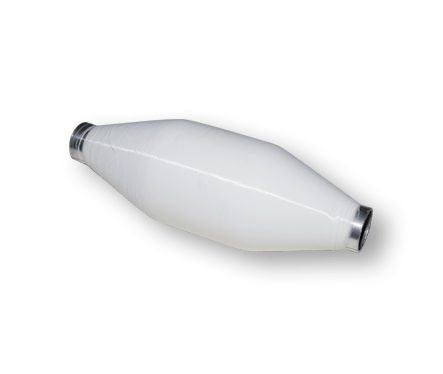Performance: Nylon is a tough angular translucent or mi […]
Performance: Nylon is a tough angular translucent or milky white crystalline resin. The molecular weight of nylon as an engineering plastic is generally 15,000 to 30,000. Nylon has high mechanical strength, high softening point, heat resistance, low friction coefficient, and wear resistance. Self-lubricating, shock-absorbing and noise-absorbing, oil-resistant, weak acid-resistant, alkali-resistant and general solvents, good electrical insulation, self-extinguishing, non-toxic, odorless, good weather resistance, poor dyeability. The disadvantage is that the water absorption is large, which affects the dimensional stability and electrical properties. The fiber reinforcement can reduce the water absorption rate of the resin and make it work under high temperature and high humidity. The affinity of nylon and glass fiber is very good.
Polyamide is mainly used for synthetic fibers, and its most prominent advantage is that its wear resistance is higher than all other fibers, which is 10 times higher than cotton and 20 times higher than wool. Slightly add some polyamide fibers to the blended fabric. Greatly improve its wear resistance; when stretched to 3-6%, the elastic recovery rate can reach 100%; can withstand tens of thousands of deflections without breaking. The strength of polyamide fiber is 1-2 times higher than cotton, 4-5 times higher than wool, and 3 times higher than viscose fiber. However, polyamide fiber has poor heat resistance and light resistance, and its retention is not good. The clothes made are not as crisp as polyester. In addition, the nylon-66 and nylon-6 used for clothing have the disadvantages of poor hygroscopicity and poor dyeability. For this reason, new polyamide fibers of nylon-3 and nylon-4 have been developed. Lightness, excellent wrinkle resistance, good air permeability, good durability, dyeability, and heat setting are considered promising.
Due to its non-toxic, light weight, excellent mechanical strength, wear resistance and good corrosion resistance, polyamide is widely used to replace copper and other metals in the manufacture of bearings, gears, Pump blades and other parts. Polyamide melt-spun into silk has high strength, mainly used as synthetic fiber and can be used as medical suture.
Nylon can be blended or purely spun into various medical and knitwear for civil use. Nylon filaments are mostly used in the knitting and silk industries, such as woven single stockings, elastic stockings and other various kinds of nylon socks, nylon scarves, mosquito nets, nylon laces, elastic nylon outerwear, various nylon silk or interwoven silk products. Nylon staple fibers are mostly used for blending with wool or other chemical fiber wool products to make various wear-resistant clothing.
In industry, nylon is widely used to manufacture cords, industrial fabrics, cables, conveyor belts, tents, fishing nets, etc. In defense, it is mainly used as parachute and other military fabrics.
Polyamide The repeating structure of the molecular chain is a type of polymer with no amide group.
Polyamide resin is a chemical raw material with excellent performance and wide application. It can be divided into two categories according to its properties: non-reactive or neutral polyamide and reactive polyamide. Neutral polyamides are mainly used for the production of inks, heat-sealable adhesives and coatings, reactive polyamides are used for epoxy resin curing agents, and for thermosetting surface coatings, adhesives, lining materials and cans, molds Resin. The neutral dimer acid polyamide resin has good adhesion on polyethylene and other substrates, and is particularly suitable for printing on plastic films such as polyethylene surface packaging films and metal foil composite laminated films; the inks prepared by the neutral polyamide resin are: Glossiness, good adhesion performance, excellent alcohol dilution, low gelation, quick drying, low odor. Dimer acid-based heat-sealable resins are widely used in shoemaking, canning, packaging, and book binding; for seam sealing of canned packaging; for bonding new structural containers of frozen apples, oranges, and other fruit juices. The heat-sealable polyamide binder, because it has resistance to dry cleaning, strong detergents, bleaching agents and high-temperature washing conditions in laundry rooms and homes, has a strong bonding strength to fabrics and is easy to use for strong object bonding; because it has the necessary Adhesive strength and excellent moisture resistance are used for heat shrinkable cable sleeves. Other uses of neutral polyamine resins include the preparation of thixotropic coatings, civil water-based adhesives, fabric antistatic agents, transparent candles and detergents. The reactive polyamide resin further reacts to be used as a curing agent for epoxy resin, and is widely cross-linked to become a thermosetting resin. When used as a curing agent, it has the advantages of large randomness, non-toxicity, can be cured at room temperature, and is soft and not brittle. It can make the epoxy resin have excellent adhesion, flexibility, toughness, and chemical resistance. , Moisture resistance and surface finish. The largest uses of dimeric acid amine resins-epoxy resins are adhesives, surface coatings, potting, and molding resins. The adhesive has good wetting performance, high bonding strength and good internal plasticity, and can withstand greater impact than amine-cured epoxy resin. This kind of adhesive can be used as metal side seam adhesive, plastic, automobile body welding agent and caulking material, and also can be used as metal-metal bonding structural adhesive. Dimer acid-based polyamide cured epoxy resin has excellent properties such as flexibility, chemical resistance, salt corrosion resistance, impact resistance and high gloss, and is widely used as a surface coating.
